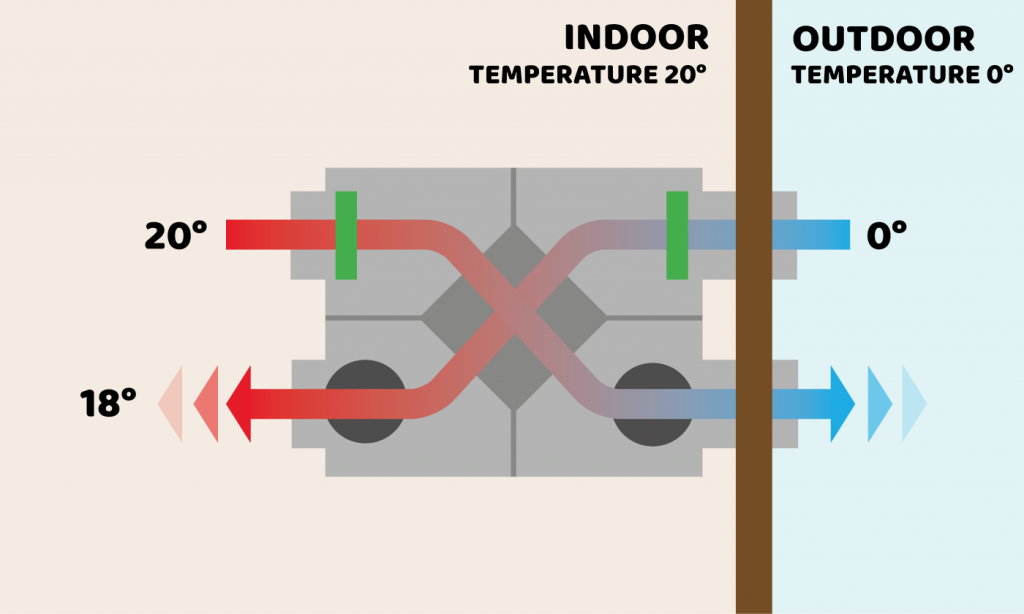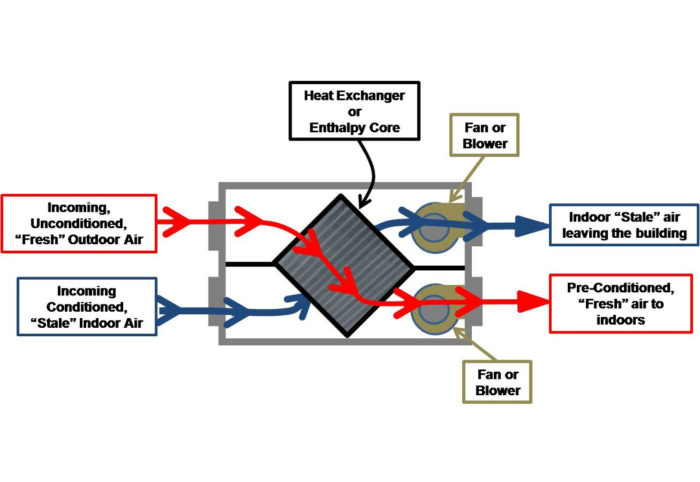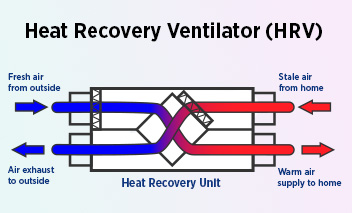HRV Demystified: Everything You Should Know
Wiki Article
Discovering the Conveniences of Heat Recovery Ventilation for Energy Effectiveness in Houses
Heat Recovery Ventilation (HRV) systems supply homeowners a useful method to boosting energy effectiveness. By redeeming warmth from outbound air, these systems can substantially decrease heating & cooling prices. Furthermore, they give a consistent supply of fresh air, enhancing interior air quality and convenience levels. As home owners consider sustainable choices, recognizing the nuances of HRV systems comes to be increasingly vital. What elements should one review before making such a financial investment?Comprehending Heat Recovery Ventilation Systems

Exactly How HRV Improves Indoor Air High Quality

Energy Cost Savings: The Financial Benefits of HRV
Maximizing power performance, heat recovery ventilation (HRV) systems offer significant financial advantages for home owners. By recuperating and reusing heat from exhaust air, HRVs noticeably minimize cooling and heating prices. This technology can cause energy financial Get More Information savings of up to 30%, relying on environment and usage patterns. Homeowners usually notice reduced utility costs shortly after setup, making HRVs an economically sensible financial investment gradually. In addition, lots of regions supply incentives or refunds for energy-efficient upgrades, even more enhancing the economic charm. As power rates remain to increase, the cost-effectiveness of HRVs ends up being increasingly clear. In general, the incorporation of HRV systems not only promotes power performance however likewise adds to lasting economic cost savings for homes.The Environmental Effect of Heat Recovery Ventilation
A considerable environmental benefit of heat recovery ventilation (HRV) systems exists in their capability to minimize total power usage. By redeeming warm from exhaust air and moving it to incoming fresh air, HRV systems lessen the need for energy-intensive home heating and cooling down techniques. This reduction in energy demand adds to lower greenhouse gas discharges, as less nonrenewable fuel source is required to preserve comfy interior temperature levels. Furthermore, HRV systems boost interior air quality by successfully trading stagnant air with fresh outdoor air, lowering dependence on mechanical air conditioning systems that can harm the atmosphere. In general, the application of HRV systems supports lasting living methods and lines up with worldwide efforts to battle climate modification by advertising energy efficiency in domestic settings.
Choosing the Right HRV System for Your Home
Exactly how can property owners ensure they select the ideal heat recovery ventilation (HRV) system for their requirements? They should analyze their home's dimension and layout, as these variables influence airflow needs. Next, evaluating the system's performance scores is vital, as greater rankings indicate far better efficiency and energy financial savings. Property owners should also take into consideration installment and upkeep expenses, contrasting different brand names and models for value. In addition, it's vital to evaluate sound degrees, as some systems operate even more silently than others. Consulting with cooling and heating specialists can supply tailored suggestions based upon particular home problems. Taking a look at user reviews and guarantees can aid in making an educated decision, guaranteeing that the selected HRV system effectively improves interior air high quality and power effectiveness.Frequently Asked Concerns

Just how Commonly Should I Tidy or Maintain My HRV System?
The regularity of cleansing or keeping a heat healing ventilation (HRV) system typically relies on usage and environmental aspects. Typically, it is recommended to perform upkeep every 6 months to guarantee peak efficiency and air high quality.
Can HRV Equipments Help In Reducing Moisture Levels Indoors?
HRV systems can effectively decrease have a peek here indoor humidity levels by exchanging stale, damp air with fresh, drier air from outdoors. HRV Heat Recovery Ventilation. check over here This process helps maintain a well balanced indoor setting, enhancing comfort and stopping moisture-related concerns
What Is the Life-span of a Normal HRV System?
The lifespan of a normal heat recovery ventilation (HRV) system varies, normally lasting in between 10 to 15 years. Routine maintenance can prolong its performance and functional life, making sure peak performance throughout its use duration.Are There Any Sound Interest In HRV Equipments?
Sound interest in HRV systems can occur, specifically from follower operation. Many modern-day devices are made to lessen audio degrees, guaranteeing they run silently while preserving efficiency, which addresses prospective disturbances in living atmospheres.Can I Install an HRV System Myself, or Do I Required a Specialist?
The specific contemplated whether to mount the heat recovery ventilation (HRV) system directly or hire an expert. Normally, while do it yourself installment is possible, experience assurances correct performance and compliance with neighborhood building codes, boosting system effectiveness.Report this wiki page